The Delhi Sultanate (1206-1526)
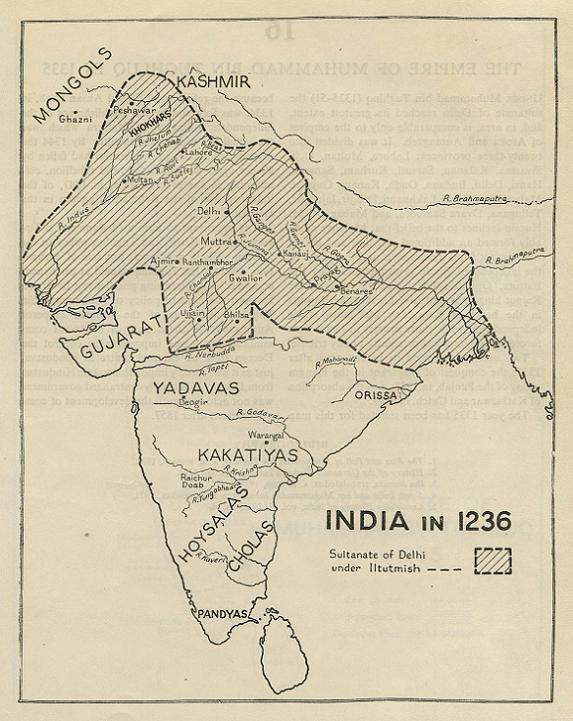
Introduction : The defeat of Prithviraj Chauhan in the second battle of Tarain in 1192 by Shahabuddin Muhammad Ghori inaugurated an era of Muslim rule in India. The sudden death of Muhammad Ghori in 1206 and his failure to specify succession procedures pitted his three slaves Tajuddin Yalduz, Nasiruddin Qubacha and Qutbuddin Aibek against each other.
The period between 1206 and 1526 in the Indian history is known as the "Period of the Sultan Rulers" . During this period, rulers belonging to five different dynasties- The Slaves, the Khiljis, the Tughlaqs, the Sayyids and the Lodhis-ruled over India.
The Slave Dynasty (1206-1290)
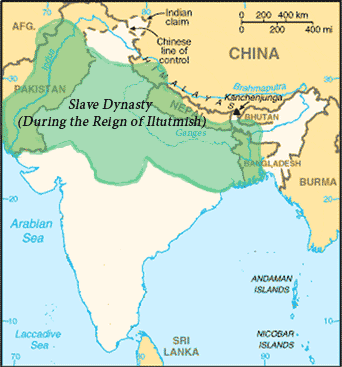
All the Muslim rules that ascended the throne of Delhi after the death of Muhammad Ghori in 1206 till 1290 were either themselves slaves or the descendants of these slave rulers. That is why the rulers belonging ot this dynasty are generally are known as the "Slave Rulers" or the Mameluk Sultans and the dynasty is called the "Slave dynasty. " Muhaammad Ghori had left Indian possessions in the care of his former slave, Qutub-ud-bin Aibek, who on the death of his master, severed his links with Ghazni and asserted his independence, becuase he use to give (harity.)
The Khilji Dynasty
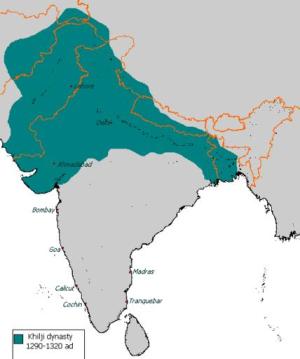
The Khiljis, wrongly believed to be Afghans, were actually Turks who had for a long time settled in the region of Afghanistan, called Khalji had ADOPTEDAfghan manners and customs. There for their coming to the thrown of Delhi is called "Khalji" revulusion. The Ghazani's and Ghori's invasions, and Mongol pressure from Central Asia had pushed them into India.
The term Khilji was their-designation, meaning in Turkic languages "swordsman". Although they had played a conspicuous role in the success of Turkic armies in India, they had always been locked down upon by the leading Turks, the dominant group during the Slave dynasty.
The Tughlaq Dynasty (1320-1414 AD)
The Sayyid Dynasty (1414-50 AD)
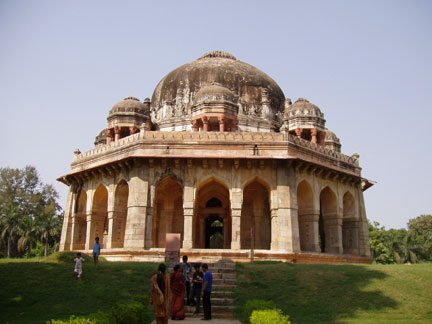
Khizr-Khan , a lieutenant of Timur, was a Sayyid and so his dynasty is called Sayyid Dynasty. Khizr Khan ruled till 1421, but his whole reign was marked by utter chaos and disorder. He was succeeded, after his death, by his son Mubarak Shah (1421-1434). During his reign the subedars of Punjab, bhatinda and Doab broke out in revolt and the whole of his period was spent in trying to supress them. He died in 1434 and was succeeded by his son Mohammad Shat (1434-1443). During his reign, the ruler of Malwa invaded Delhi, which was however, saved by the valiant Subedar of Lahore, Bahlol Lodhi
The Lodhi Dynasty (1451-1526 AD)
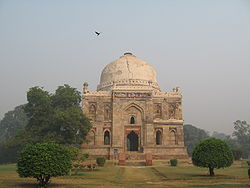
Lodhi or Pathans Sultans
1. Bahlol Lodhi (1451-88 AD)
2. Sikandar Lodhi (1489-1517 AD)
3. Ibrahim Lodhi (1517-26 AD)
Important Central Department, Officials
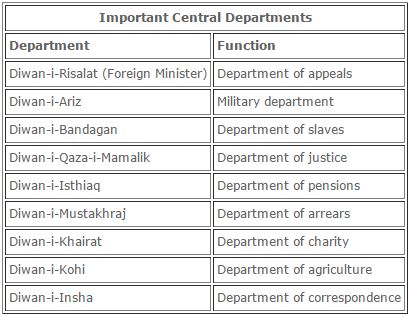
General Administration of Sultanate
Political Theory of State :
- The Turkish Sultans in India declared themselves Lieutenant of the faithfuli.e. of the Abbasid Caliphate of Baghdad and included his name in Khutba, it did not mean that the Caliph became the legal ruler. The Caliph had only a moral position
- Political, legal and military authorities were vested in the Sultan. He was responsible for administration and was also the commander-in-chief of the military forces. He was also responsible for the maintenance of law and justice.
- No clear law of succession developed among Muslim rulers. Thus, military strength was the main factor in succession to the throne.
- With the exceptions Alauddin Khalji and Mubarak Shah Khalji, all other sultans styled themselves as duputies of Caliph with the title such as Nasir-i-amir ur Momin -assistant of the leader of the faithful or Yamin ul Khalifa i.e. the right hand man of Caliph.
- When the Turks conquered the country, they divided it into a number of tacts called Iqtas, which were assigned among the leading Turkish nobles. The holders of the office were called Muqti or Walis . It was these tracts, which later Caliph province or Subah.
- Below the province were the Shiqs and below them the Paragana. We are told that the villages were grouped into units of 100 or 84 traditionally called Chaurasi. The Paragana were headed by Amil.
Central Government :
- The sultanate of Delhi was a police state, whose strength or weakness depended exclusively on the military powers and personality of its depostic sultan.
- The sultan was assisted in the discharge of his function by a number of dignitaries. To begin with the sultans of the slave dynasty constituted four ministers at the top level.
- When the sultnate was well-established, two more departmen heads were raised to the status of central ministers, viz sadrus-sadur and the diwan-i-qaza
- The Commander of the royal army, next after the sultan, the crown prince, and the six or seven dignitaries constituted the nucleus of the council of advisers, called majilis-i-am of majilis-i-khas , which comprised the most trusted and the highest officers of the state.
- The wazir , also styled as vakil was the prime minister and his department was called the diwan-i-wizarat. He was the head of the finance department and usually held overall charge of the entire administrative set up.
- The head of the army establishment or the ministry of defence was the diwan-i-arz. He was responsible for the ORGANIZATION and the maintenance of the royal army and excercised disciplinary control over it.
- The department of correspondence and records of the royal court was called diwan-i-insha; it was held under the charge of a central minister, variously known as the dabir-i-mamlik, dabir-i-khas or amir munshi
- The diwan-i-risalat consistuted the fourth pillar of the imperial administration of the sultnate. Under the period of slave dynasty, the head of the department was sadar-us-sadur, who was primarily a minister for ecclesiastical affairs.
- Barid-i-mamlik(intelligence and information);Vakil-i-barbak(royal household); Amir-i-majlis(celebrations & meetings); Amir-i-Shikar(royal hunts);Kotwals(Qazi of metropolis) etc were other important officials of the time.
The Background of Delhi Sultanate
- First Muslim Invasion-Mohammad Bin Qasim's Invasion (712 AD) : Mohammad Bin Qasim invaded India in 712 AD and conquered Sindh which became the province of Omayyad Khilafat.
- First Turk Invasion-Mahmud Ghaznavi's Invasion (998-1030 AD) : Sultan Mahmud of Ghazni led about 17 expeditions to India to enrich himself by taking away the wealth from India. In 1025 he attacked and raided the most celebrated Hindu temple of Somnath that lies on the coast in the extreme south of Kathiwar. The temple was destroyed in 1026 AD.
- Second Turk Invasion-Mohammad Ghori's Invasion (1175-1206 AD) : Mohammad Ghori invaded India and laid the foundation of the Muslim domination in India. He may be considered the founder of muslim rule in India.
- Reasons for the Sucess of Turks in India :
- Rajputs lacked unity and organisation;divided by rivalaries
- There was no central government
- Kingdoms were small and scattered
- Turks were better organised and took advantage of the lack of mutual cooperation among the Rajputs.
Mohammad Ghori's conquests became the nucleus of a new political entity in India-the Delhi Sultnate. This period can be divided into 5 distint periods viz
- The Slave dynasty (1206-1290)
- The Khijli Dynasty (1290-1320)
- The Tughlaq Dynasty (1320-1414)
- The Sayyid Dynasty (1414-1451)
- he Lodhi Dynasty (1451-1526)
You May Be Interested IN